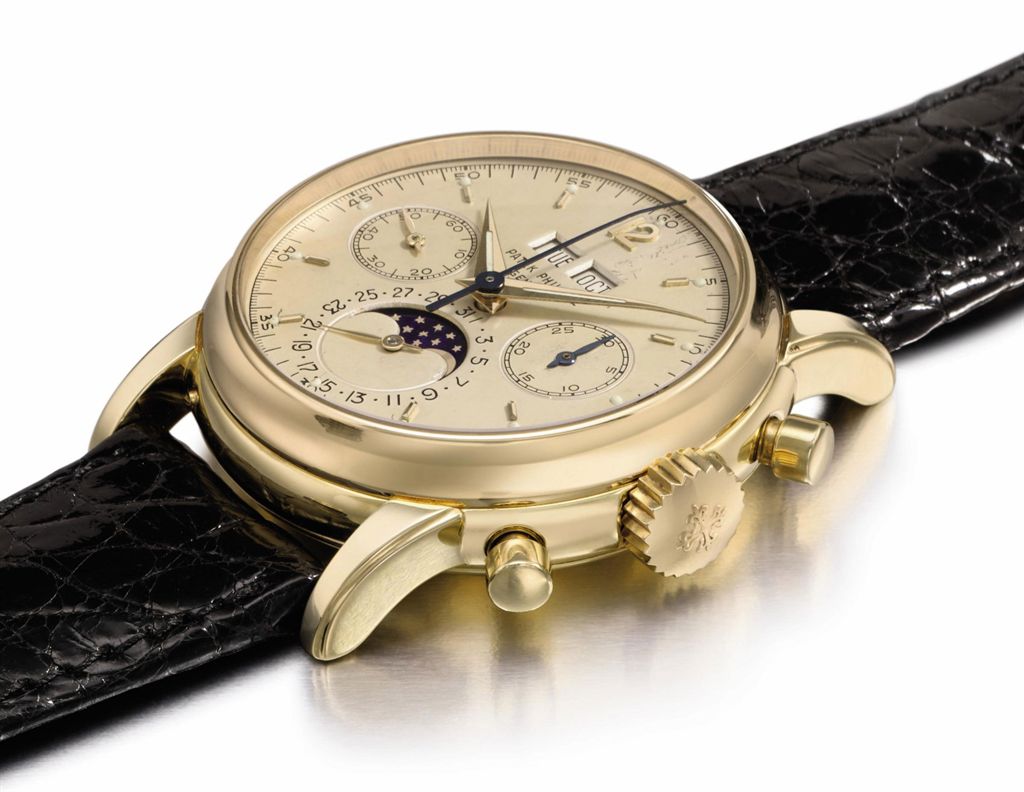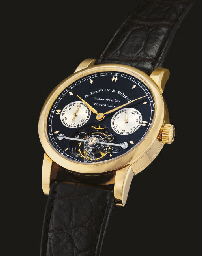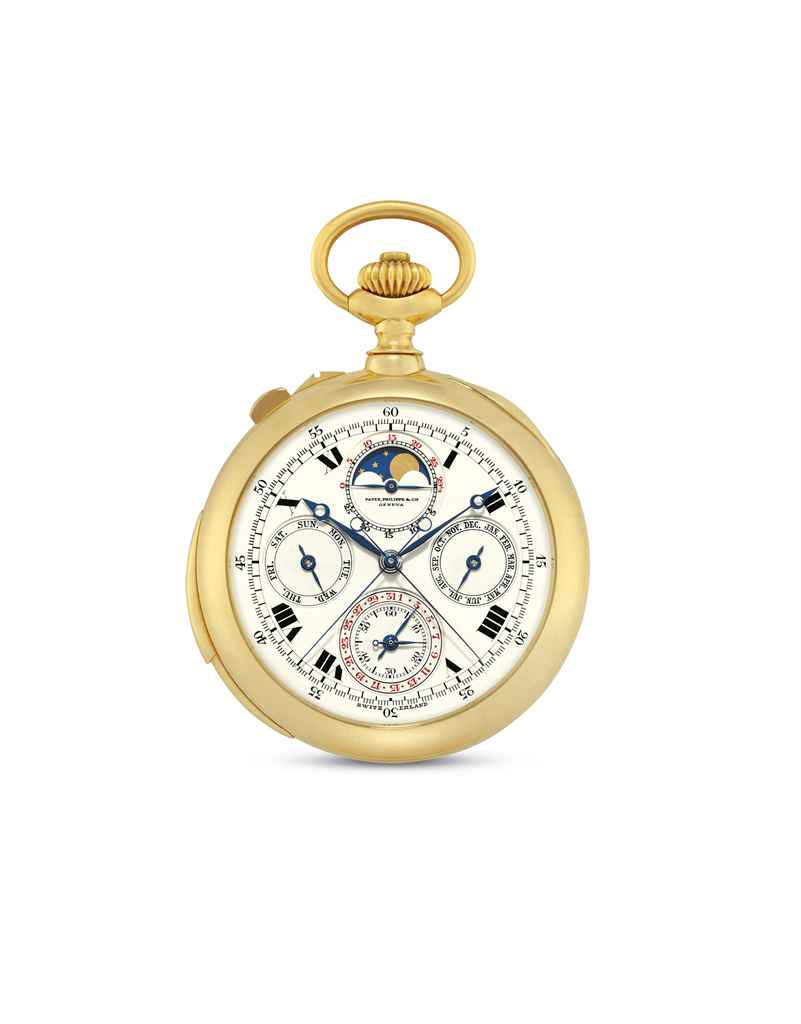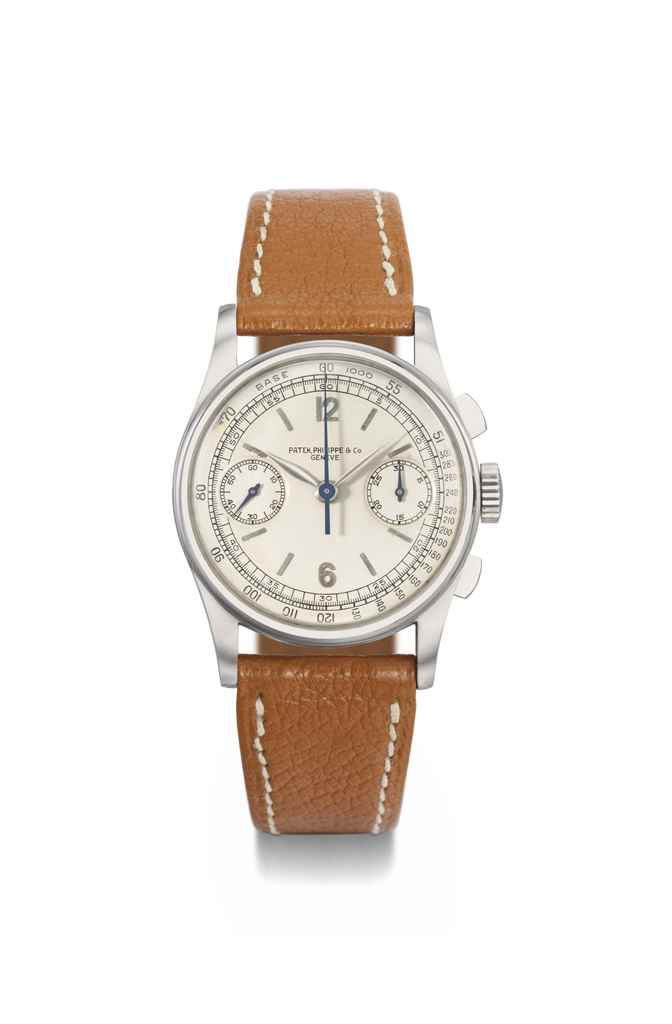A fine and rare George II Louis XV style ormolu mantel timepiece with year calendar dial Clay, London, mid 18th century The circular five pillar single chain fusee movement with verge escapement and short-bob pendulum, the backplate covered with a rotating circular disc engraved Clay to surface and connected via the centre-pivot to the concentric calendar hand and advanced day-by day via pallet flag engaging with teeth cut to the circumference, the 4.25 inch circular enamelled dial with cobalt blue centre within small diameter Roman numeral chapter ring with Arabic five minutes and concentric bands annotated with painted signs of the Zodiac, Sun Rise for each sign and date-of-the-month with months named to outer track, with fine sculpted steel hour and minute hands to centre and calendar hand issuing from a gilt solar mask within narrow canted gilt bezel surround, in a waisted asymmetric rococo scroll and leafy spray cast and chased case with surmount cast with an eagle overpowering a dragon above hinged convex glazed bezel and scroll pierced and engraved brass shaped frets to sides, the rear with circular glazed aperture, on generous assymmetric scroll cast feet incorporating scallop shell detail, (case very dirty/now with blacked finish), 39cm (15.25ins) high. It is possible that the current lot may have been made by Charles Clay who originated from near Huddersfield and gained his freedom of the Clockmaker's Company prior to 1716. In 1723 he was appointed Clockmaker in His Majesty's Board of Works and in 1731 supplied the turret clock for the gateway at St. James's Palace. He specialised and experimented with musical mechanisms and is perhaps now best known for his organ clocks. One of which now resides at Windsor Castle which was acquired from his widow three years after Clay's death in 1743. Another incomplete organ clock was also acquired around this time for Augusta wife of Frederick, Prince of Wales, this clock was subsequently completed by George Pyke and now resides at Kensington Palace. The dial of the current lot is particularly interesting and very well executed. The year calendar hand is ingeniously driven by a disc covering the rear of the movement and is advanced on a daily basis via a flag engaging with teeth cut to the circumference. The positioning of the mechanism allows for easy adjustment of the date as well as straightforward servicing of the mechanism. The indications on the dial are somewhat unusual and perhaps archaic for this date - possibly having more in common with European Renaissance work than 18th century English practice. Indeed indication of times of ‘Sun Rise’ would have been more relevant during the early Renaissance in Nuremburg when each calendar day (but with unequal day and night hours) started at sunrise. Most English dials with year calendar produced during the latter years of the 17th century and throughout the 18th century tend to incorporate an equation of time to allow setting with a sundial, however, when considering the small size of the current lot, this may have been one complication too many. It is therefore perhaps possible that the time of 'Sun Rise' may have been included as a basic form of simple celestial regulation - as it would allow the timekeeping of the clock to be checked at dawn (but only periodically). The case is particularly bold in its casting and incorporates 'English' features such as engraved brass sound frets to the sides and wooden seatboard to support the movement; it is therefore possible that the case was made in England in the Louis XV taste. The finish appears to have been deliberately 'blacked' (possibly during the Victorian period) however traces of original rich gilding can be seen so would probably clean-up well to a rich lustrous mercury-gilt finish. Condition report disclaimer
A fine and rare George II Louis XV style ormolu mantel timepiece with year calendar dial Clay, London, mid 18th century The circular five pillar single chain fusee movement with verge escapement and short-bob pendulum, the backplate covered with a rotating circular disc engraved Clay to surface and connected via the centre-pivot to the concentric calendar hand and advanced day-by day via pallet flag engaging with teeth cut to the circumference, the 4.25 inch circular enamelled dial with cobalt blue centre within small diameter Roman numeral chapter ring with Arabic five minutes and concentric bands annotated with painted signs of the Zodiac, Sun Rise for each sign and date-of-the-month with months named to outer track, with fine sculpted steel hour and minute hands to centre and calendar hand issuing from a gilt solar mask within narrow canted gilt bezel surround, in a waisted asymmetric rococo scroll and leafy spray cast and chased case with surmount cast with an eagle overpowering a dragon above hinged convex glazed bezel and scroll pierced and engraved brass shaped frets to sides, the rear with circular glazed aperture, on generous assymmetric scroll cast feet incorporating scallop shell detail, (case very dirty/now with blacked finish), 39cm (15.25ins) high. It is possible that the current lot may have been made by Charles Clay who originated from near Huddersfield and gained his freedom of the Clockmaker's Company prior to 1716. In 1723 he was appointed Clockmaker in His Majesty's Board of Works and in 1731 supplied the turret clock for the gateway at St. James's Palace. He specialised and experimented with musical mechanisms and is perhaps now best known for his organ clocks. One of which now resides at Windsor Castle which was acquired from his widow three years after Clay's death in 1743. Another incomplete organ clock was also acquired around this time for Augusta wife of Frederick, Prince of Wales, this clock was subsequently completed by George Pyke and now resides at Kensington Palace. The dial of the current lot is particularly interesting and very well executed. The year calendar hand is ingeniously driven by a disc covering the rear of the movement and is advanced on a daily basis via a flag engaging with teeth cut to the circumference. The positioning of the mechanism allows for easy adjustment of the date as well as straightforward servicing of the mechanism. The indications on the dial are somewhat unusual and perhaps archaic for this date - possibly having more in common with European Renaissance work than 18th century English practice. Indeed indication of times of ‘Sun Rise’ would have been more relevant during the early Renaissance in Nuremburg when each calendar day (but with unequal day and night hours) started at sunrise. Most English dials with year calendar produced during the latter years of the 17th century and throughout the 18th century tend to incorporate an equation of time to allow setting with a sundial, however, when considering the small size of the current lot, this may have been one complication too many. It is therefore perhaps possible that the time of 'Sun Rise' may have been included as a basic form of simple celestial regulation - as it would allow the timekeeping of the clock to be checked at dawn (but only periodically). The case is particularly bold in its casting and incorporates 'English' features such as engraved brass sound frets to the sides and wooden seatboard to support the movement; it is therefore possible that the case was made in England in the Louis XV taste. The finish appears to have been deliberately 'blacked' (possibly during the Victorian period) however traces of original rich gilding can be seen so would probably clean-up well to a rich lustrous mercury-gilt finish. Condition report disclaimer















Try LotSearch and its premium features for 7 days - without any costs!
Be notified automatically about new items in upcoming auctions.
Create an alert